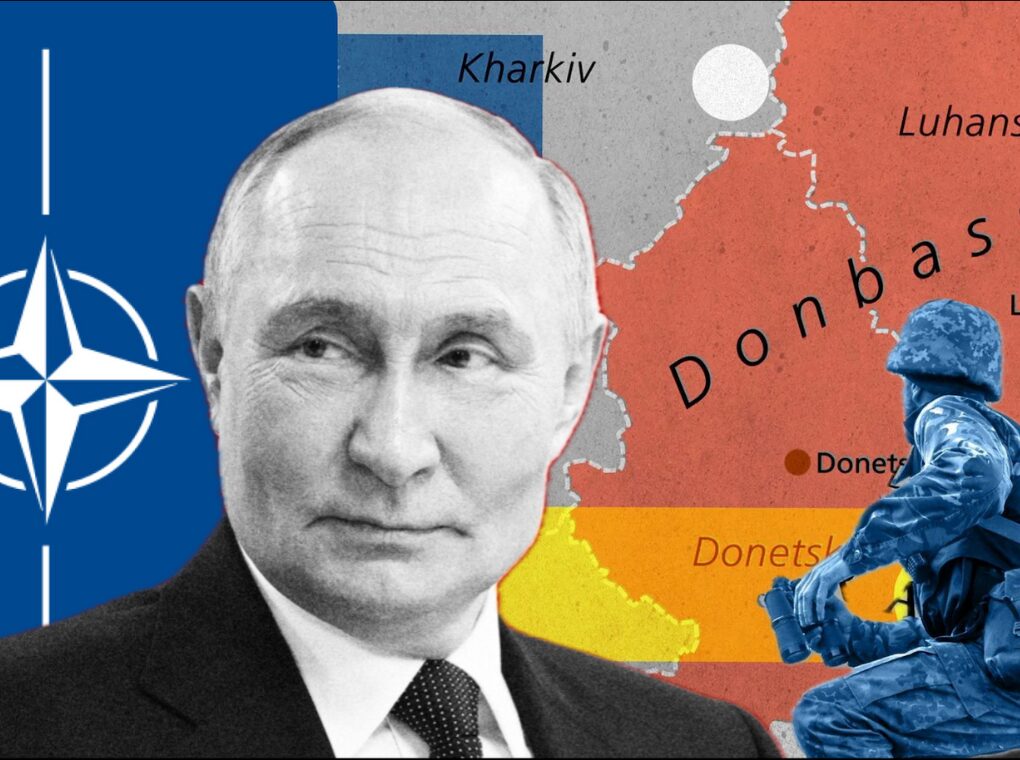Reports from individuals familiar with high-level Kremlin deliberations suggest that Russian President Vladimir Putin is pressing for sweeping concessions from Ukraine as conditions for de-escalating hostilities. According to sources cited by Reuters, Moscow’s demands include Ukraine relinquishing control over the Donbas region, renouncing its NATO ambitions, maintaining a neutral status, and ensuring that no Western military presence is established within its borders.
Why Donbas?
Geographically, the Donbas covers the eastern Ukrainian regions of Donetsk and Luhansk, stretching into industrial zones like Zaporizhzhia and Kherson. Economically, it is one of the most resource-rich and industrialized areas of Ukraine, long known as the country’s “coal and steel heartland.” Politically and culturally, it leans Russian. Nearly two-thirds of its residents spoke Russian as their first language during the collapse of the Soviet Union.
For Putin, that makes Donbas more than just land. It is a historical and emotional claim, a way of redrawing borders closer to the map he believes should exist. For Ukraine, Donbas is not just territory either—it represents sovereignty. To give it away would be to accept permanent subordination to Moscow.
The Battle over Donbas is Not New
The battle over Donbas didn’t start with Russia’s full-scale invasion in 2022. It began in 2014, right after protests in Kyiv ousted the pro-Russian president, Viktor Yanukovych. That was when Putin annexed Crimea and stoked separatist movements in Donetsk and Luhansk. Since then, Moscow-backed fighters and Russian forces have steadily expanded control.
By Ukrainian accounts, nearly 87 percent of Donbas is already under Russian hands. The war has been brutal, and some of its fiercest fighting has taken place in cities like Bakhmut and Mariupol. Every attempt at ceasefire has collapsed, and every round of peace talks has ended with the same sticking point: Moscow wants it all, Kyiv won’t let it go.
Taken together, these conditions represent the most uncompromising stance Russia has articulated since the escalation of the 2022 conflict. For Moscow, the Donbas—already partially under Russian occupation—holds both symbolic and strategic importance. Its industrial base, Russian-speaking population, and geographic proximity to Russia have long made it central to Putin’s narrative of defending “historical Russian lands.”
The demand to formally exclude Western troops and NATO structures from Ukraine reflects Moscow’s decades-old anxiety about NATO enlargement. From the Kremlin’s perspective, any formal integration of Ukraine into NATO would eliminate the strategic buffer that Russia has relied upon since the Cold War.
Ukraine’s Dilemma
For Kyiv, these demands pose an existential problem. Surrendering territory would not only undermine national sovereignty but also set a precedent that changing borders by force is tolerated. Abandoning its NATO ambitions would deprive Ukraine of the collective security guarantees it views as vital in the face of Russian aggression. President Volodymyr Zelensky’s government has repeatedly emphasized that security assurances without firm alliances have previously failed Ukraine, citing the collapse of the Budapest Memorandum of 1994.
Even if Zelensky wanted to, Ukraine’s constitution forbids ceding land without a nationwide referendum. And Ukrainians are nowhere near ready to accept such a deal. A recent survey by the Kyiv International Institute of Sociology found that 78 percent of Ukrainians opposed giving up any territory, even if it meant prolonging the war. That’s not just nationalism talking. People know that if Ukraine surrenders Donbas, Russia could easily move the goalposts again. First Donbas, then Odesa, then Kyiv.
The West’s Strategic Calculations
The United States and European allies face a dilemma of their own. While Western governments are eager to prevent a wider war in Europe, accepting Moscow’s demands would effectively reward territorial aggression and weaken NATO’s credibility. At the same time, outright rejection risks prolonging a costly and bloody conflict. This tension underscores why negotiations over Ukraine’s future security architecture are fraught, with few clear offramps.
Signals of Negotiation or Hardline Stance?
Analysts disagree on whether these demands are genuine preconditions for peace or a negotiating tactic aimed at extracting maximum concessions. By presenting an extensive list of conditions, Putin may be setting the stage for smaller compromises that still shift Ukraine firmly out of NATO’s orbit while legitimizing Russian control of parts of eastern Ukraine.
The reported demands from the Kremlin highlight the ongoing clash at the heart of the war: The Donbas dispute isn’t just about land. It’s about history, identity, and the limits of Western resolve. Putin sees it as unfinished business from the Soviet collapse. Zelensky sees it as a line that cannot be crossed without losing the country itself. Trump, meanwhile, appears to view it as a bargaining chip—something that could be traded to end the war quickly.
Ukraine’s aspiration to align with the West versus Russia’s determination to reassert dominance over its near abroad. Whether this maximalist position is a non-negotiable bottom line or an opening gambit for talks remains unclear. What is certain, however, is that any settlement along the lines suggested would reshape Europe’s security order for decades to come.
